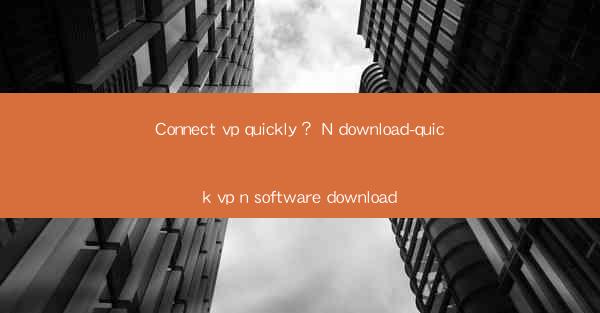
Connect VP Quickly: N Download-Quick VP N Software Download
In today's fast-paced digital world, the need for quick and efficient communication is more crucial than ever. One of the most effective ways to connect with your peers, clients, and business partners is through video conferencing. This article delves into the importance of connecting with a Virtual Private Network (VPN) quickly and provides a comprehensive guide on downloading and using a VPN for video conferencing. We will explore various aspects, including the benefits of using a VPN, the process of downloading a VPN, the features to look for in a VPN, and troubleshooting common issues.
Benefits of Using a VPN for Video Conferencing
1. Enhanced Security: One of the primary reasons for using a VPN is to ensure secure communication. A VPN encrypts your data, making it nearly impossible for hackers to intercept and access sensitive information. This is especially crucial when sharing confidential business data during video conferences.
2. Improved Performance: VPNs can significantly improve the performance of your video conferencing software. By connecting to a server closer to your location, you can experience reduced latency and faster data transfer rates, resulting in a smoother and more efficient video conferencing experience.
3. Access to Geo-Restricted Content: Many video conferencing platforms and applications are geo-restricted, meaning they are only available in certain countries. A VPN allows you to bypass these restrictions and access the content from anywhere in the world.
4. Privacy Protection: VPNs mask your IP address, making it difficult for third parties to track your online activities. This is particularly important when discussing sensitive topics during video conferences.
5. Cost-Effective: Many VPN services offer free versions, which can be a cost-effective solution for businesses and individuals looking to enhance their video conferencing experience.
How to Download a VPN for Video Conferencing
1. Research and Compare VPN Providers: Before downloading a VPN, it's essential to research and compare different providers. Look for reviews, ratings, and customer feedback to ensure you choose a reliable and reputable VPN service.
2. Choose the Right Plan: Most VPN providers offer various plans, including free, monthly, and annual subscriptions. Choose a plan that suits your needs and budget.
3. Download the VPN Software: Once you have selected a VPN provider, visit their website and download the software for your operating system (Windows, macOS, Linux, iOS, or Android).
4. Install the VPN: Follow the installation instructions provided by the VPN provider. Ensure that you select the correct settings and configurations for optimal performance.
5. Connect to a Server: After installing the VPN, connect to a server of your choice. Choose a server that is closest to your location for the best performance.
6. Verify the Connection: Once connected, verify that your VPN is working correctly by checking your IP address and ensuring that your data is encrypted.
Features to Look for in a VPN for Video Conferencing
1. Strong Encryption: Look for a VPN that offers strong encryption protocols, such as AES 256-bit encryption, to ensure the security of your data.
2. Fast Server Speeds: Choose a VPN with servers located in various countries to ensure fast and reliable connections.
3. No-Logs Policy: Opt for a VPN provider with a no-logs policy, which means they do not track or store your online activities.
4. Multiple Device Support: Ensure that the VPN supports multiple devices, allowing you to connect to your video conferencing software from various devices.
5. 24/7 Customer Support: Choose a VPN provider that offers 24/7 customer support to assist you with any issues or questions you may have.
6. User-Friendly Interface: Look for a VPN with an intuitive and easy-to-use interface, making it simple to connect to servers and manage your settings.
Common Issues and Troubleshooting
1. Slow Connection: If you experience slow connection speeds, try connecting to a different server or contact your VPN provider for assistance.
2. Connection Drops: If your VPN connection drops frequently, ensure that your internet connection is stable and try connecting to a different server.
3. Compatibility Issues: If you encounter compatibility issues with your video conferencing software, try updating the software or contacting the VPN provider for assistance.
4. Firewall Blocking: Ensure that your firewall is not blocking the VPN connection. Adjust your firewall settings or contact your IT department for assistance.
5. Incorrect Settings: Double-check your VPN settings to ensure that they are configured correctly for optimal performance.
6. Software Glitches: If you encounter software glitches, try reinstalling the VPN software or contacting the provider for a solution.
Conclusion
Connecting with a VPN quickly and efficiently is crucial for a seamless video conferencing experience. By understanding the benefits of using a VPN, the process of downloading and installing a VPN, the features to look for, and troubleshooting common issues, you can ensure that your video conferencing sessions are secure, efficient, and productive. Choose a reliable VPN provider, follow the steps outlined in this article, and enjoy a hassle-free video conferencing experience.










